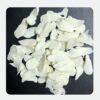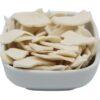- europages
- >
- COMPANIES - SUPPLIERS - SERVICE PROVIDERS
- >
- phosphates
Results for
Phosphates - Import export
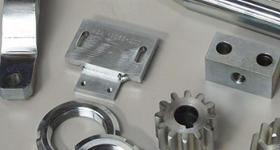
MECALTEX MECANICA GERAL DE PRECISÃO LDA
Portugal
All surface treatments called classics are possible, based on the final requirements. Phosphating ; Black Oxide ; Epoxy Paint ; Anodizing ; Hard Chrome Plating ;Electrolytic Zinc Plating; TICN ;Glass Blasting (Glass Beads)
Request for a quote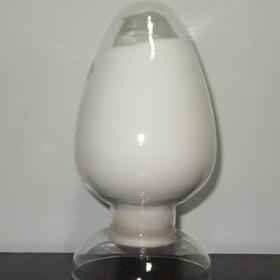
SUN CHEMICAL - COLORS & EFFECTS NETHERLANDS B.V
Netherlands
Intermediate Bulk Container (IBC) drum with 1000kg capacity/drum Use steel drum with 40kg/drum capacity and plastic woven bags with 40kg/bag capacity
Request for a quote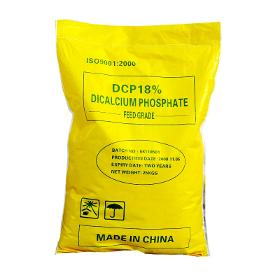
SUN CHEMICAL - COLORS & EFFECTS NETHERLANDS B.V
Netherlands
Dicalcium Phosphate (DCP) appears as white crystalline powder or granules. DCP is colorless and does not have any odor. In addition, it is neutral and shows high solubility in diluted acid and ammonium nitrate. DCP also shows slight solubility in water and is low in terms of hygroscopic abilities. DCP is not soluble in alcohol. The crystal water in Dicalcium Phosphate dihydrate (CaHPO4. 2H2O) starts to dissipate when DCP is heated at 90 0C. When heated above 400 0C, DCP turns into calcium pyrophosphate.
Request for a quote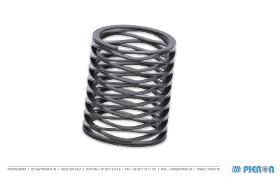
PIERON GMBH
Germany
Dimensions Spring dimensioning according to customer request Material All spring materials Stainless steel Coating In-house phosphating Color code on the spring Additional coatings through external services Specialities Wave springs highly resistant against dynamic stress Wave springs highly resistant against static stress Minimal relaxation through heat treatment Automated setting- and force-inspection Customized dimensioning Axial installation space saving up to 50 % High spring rates with low tolerances
Request for a quote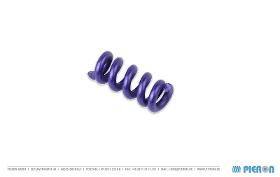
PIERON GMBH
Germany
Dimensions Wire diameter: 0,2 – 8,0 mm Spring length up to 1500 mm Special profiles feasible Outside diameter max. 120 mm Customer specific spring shape Material All spring materials Coating All commonly coated spring steels In-house phosphating In-house stove-enameling Additional coatings through external services Specialities Compression springs highly resistant against dynamic stress Compression springs highly resistant against static stress Minimal relaxation due to heat treatment Fully automated setting- and force-inspection Smallest force tolerances Customer specific packaging Assembling and mounting with other components Rapid prototyping
Request for a quote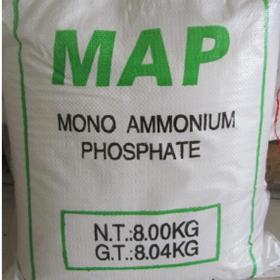
LINDEBOOM HOLDING B.V
Netherlands
Monoammonium Phosphate(MAP) Chemical formula:NH4H2PO4 Molecular weight:115.0 Standard executed: HG/T4133-2010(Tech grade) Property: White crystalline free flowing solid. Density is 1.0803, melting point is190℃. soluble in water easily, Slightly soluble in alcohol, insoluble in acetone.As a high effective non-chloride N, P compound fertilizer in agriculture, 100% water soluble fertilizer. For the fertigation , foliar application, drip irrigation and spray irrigation. Its total nourishment (N+P2O5) is at 73%, and also used as a basic raw material for N, P and K compound fertilizer. As a fire-prevention agent for fabric, timber and paper, dispersant for fiber processing and dyestuff industry, enamels for enamel,as well as used for fire retardant coating, dry powder for fire extinguisher. and printing plate making industries. 3. Packing & storage Plastic woven bag. Net weight 25 Kg,50Kg,1000Kg , store at a cool, dry and well ventilated place.
Request for a quote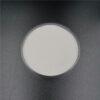
OEN CHEMICALS GMBH
Austria
Chemical appearance: PVA is a water-soluble synthetic polymer. It is usually hazy white and does not have any distinct odor. It is usually supplied in powders or pellets but can be supplied as solutions or beads. Chemical application and strengths: Polyvinyl alcohol has quality adhesive and emulsifying properties. It has high flexibility and tensile strength. It is insoluble and resists organic solvents, grease, and oil. It has strongaroma and high oxygen barrier properties. Most of these properties are dependent on humidity levels with high levels reducing its tensile strength. PVA is used in several areas, as follows: It is used as a release liner in paper coatings
Request for a quote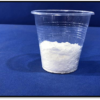
OEN CHEMICALS GMBH
Austria
Phthalic Anhydride is most commonly used for the large-scale production of plasticizers for plastics. It performs the useful functions of fillers for products such as paints, plastics, and textiles etc. It is used in the production of building material. It is utilised for making insulating material for protection from noise and cold etc. such as in homes and buildings. It is also consumed for making insulation for wires and electrical cables. In the chemical industry it acts as a modifier for chemicals. It is widely used for the efficient production of colourants. It is used for making dyes and pigments.
Request for a quote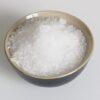
OEN CHEMICALS GMBH
Austria
Neopentyl Glycol is a very useful organic chemical compound having the chemical formula C5H12O2. Chemical Appearance Neopentyl Glycol has the appearance of a white crystalline solid. It is odourless. It has good solubility in water and is very hygroscopic. It is soluble in benzene and chloroform. It is highly soluble in ethanol and diethyl ether. Chemical Applications and Strengths Neopentyl Glycol is an extremely efficient chemical compound and therefore, has many industrial applications. Its main applications and strengths are: Neopentyl Glycol is most popularly used for the production of unsaturated resin.
Request for a quote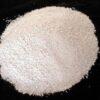
OEN CHEMICALS GMBH
Austria
Monocalcium Phosphate MCP (Feed Grade): The Ultimate Feed Additive for Optimal Livestock Nutrition Are you searching for a superior feed additive to ensure optimal health and growth for your livestock? Look no further than Monocalcium Phosphate MCP (Feed Grade). With its exceptional quality and nutrient composition, MCP is the perfect choice for enhancing the overall well-being of your animals. MCP is specifically formulated to provide a highly digestible source of phosphorus and calcium, which are essential minerals playing a crucial role in the development and maintenance of healthy bones, teeth, and overall skeletal structure. By incorporating MCP into your animal feed, you ensure that your livestock receives the necessary nutrients to support their growth and well-being.
Request for a quote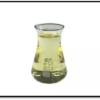
OEN CHEMICALS GMBH
Austria
Tetraethylenepentamine – TEPA is an organic chemical. It belongs to the group of ethylene-amines. It is a very useful chemical substance that is industrially made by the reaction of aqueous ammonia with 1,2-dichloroethane and then neutralisation and fractional distillation. Its chemical formula is C8H23N5. It is a polyazaalkane. Chemical Appearance Tetraethylenepentamine – TEPA, similar in appearance to most amines, is not colourless but has the appearance of a yellow coloured liquid. It is a somewhat viscous liquid. It is soluble in many polar solvents. It is slightly less dense than water. Its vapours are heavier than air. Chemical Applications and Strengths
Request for a quote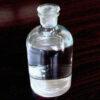
OEN CHEMICALS GMBH
Austria
Chemical appearance Ethyl – 1 – Propenyl Ether or Propenyl Ethyl Ether has a colorless transparent appearance. It comes in a liquid form with a strong pungent odour and has a density level of 0.982 g/mL. Chemical application and strength Ethyl – 1 – Propenyl Ether or Propenyl Ethyl Ether has a wide range applications in the industry. One of which is that it is used as a polymer used in various products like coatings, lacquers, and surgical adhesives. It is also used as a modifier for polystyrene and alkyd resins. Another application is as a plasticizer for nitrocellulose and other kinds of plastics.
Request for a quote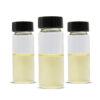
OEN CHEMICALS GMBH
Austria
Chemical appearance: Glutaraldehyde is usually a light yellow or clear liquid. It has a strong, pungent smell. It is highly toxic and reacts when in contact with the water. It also has a rather low boiling point of about 187 degrees Celsius. However, it is noncombustible. Chemical application and strengths: One of the commonest uses of the Glutaraldehyde is its use as a sterilization agent for use in cleaning surgical instruments, among other areas. It reacts with thiol and animes groups to kill any bacteria. The same principle is applied in its use as a disinfectant. In addition to being an anime-reactive compound, it is a homonbifunctionalcrosslinker. It kills cells fast by crosslinking the protein elements within them. For this work, it can be used alone or mixed with formaldehyde to enhance its cell-killing qualities.
Request for a quote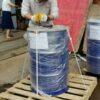
OEN CHEMICALS GMBH
Austria
The most common applications of epoxy resin are evident in polyacid and anhydride cures. It serves as a chemical reagent as well as an organic intermediate for auxiliaries, plasticizers, and coatings. The low viscosity, higher stability, and favorable electrical properties make ECC an ideal choice for different industrial applications. It is an effective electrical insulator, thereby making it perfect for use in coating and adhesives as well as for printing ink. Low-viscosity UV-curing printing inks, CD manufacturing, and potting of optoelectronic devices are some of the productive applications of ECC that leverage its excellent electrical properties. Furthermore, the electrical properties of ECC also support its use for adhesive bonding and insulation encapsulation. In addition, ECC is also used for specific electronic products that demand higher resistance to cold and thermal shock..
Request for a quote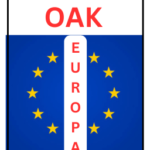
OEN CHEMICALS GMBH
Austria
EDTA Tetrasodium is a very useful salt which is made as a result of neutralisation of ethylenediamine tetra acetic acid with four equivalents of sodium hydroxide. It has the chemical formula C10H12N2Na4O8. Chemical Appearance ESTA Tetrasodium has the appearance of a white solid. It is highly soluble in water. Chemical Applications and Strengths EDTA Tetrasodium is an extremely efficient chemical compound and therefore, has many industrial applications. Its main applications and strengths are: EDTA Tetrasodium is most popularly used for making cosmetic additives. It is widely used in the production of dyeing auxiliaries.
Request for a quote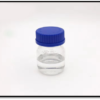
OEN CHEMICALS GMBH
Austria
Dietilenoglicol – DEG is an organic compound. It is a very useful chemical compound which is industrially produced from the partial hydrolysis of ethylene oxide. It is categorised as a poisonous chemical and its chemical formula is C4H10O3. It is a water-soluble liquid. Chemical Appearance Dietilenoglicol – DEG has the appearance of a colourless liquid. It is an odourless compound. Diethylene Glycol is a hygroscopic liquid. It has a sweetish taste. It is soluble in water, alcohol, ether, acetone, and ethylene glycol. Chemical Applications and Strengths Dietilenoglicol – DEG or Diethylene Glycol is an extremely useful chemical compound and therefore, has many industrial applications. Its main applications and strengths are: Dietilenoglicol – DEG is most commonly used as a solvent. This application is effective for resins, dyes, oils, and other organic compounds.
Request for a quote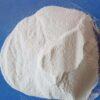
OEN CHEMICALS GMBH
Austria
Chemical appearance: Monocalcium phosphate occurs as a white or slightly dull powder or granules. It does not have a distinct smell. It is soluble in water and does not ignite when exposed to flames. Chemical application and strengths: One of the most popular uses of monocalcium phosphate is it use a leavening agent. Here manufacturers may combine the monohydrate and anhydrous types. It releases a leavening gas from the baking soda when mixed with flour. This results in fine grains in the resulting leavened dough for baking. Feed Additive: Monocalcium phosphate is also used as a feed additive for various animal feeds such as poultry, cattle, and goat feeds.
Request for a quoteDo you sell or make similar products?
Sign up to europages and have your products listed
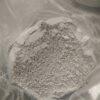
OEN CHEMICALS GMBH
Austria
Chemical appearance: Dicalcium Phosphate (DCP) appears as white crystalline powder or granules. DCP is colorless and does not have any odor. In addition, it is neutral and shows high solubility in diluted acid and ammonium nitrate. DCP also shows slight solubility in water and is low in terms of hygroscopic abilities. DCP is not soluble in alcohol. The crystal water in Dicalcium Phosphate dihydrate (CaHPO4. 2H2O) starts to dissipate when DCP is heated at 90 0C. When heated above 400 0C, DCP turns into calcium pyrophosphate. Chemical application and strengths: The primary application of feed grade DCP (18%) is evident as a feed additive for poultries and livestock. It provides much-needed phosphorus and calcium mineral nutrition. As a result, DCP can help in treating diseases such as rickets, anemia, osteomalacia, paralysis, and pullorum disease among poultry and livestock. It is primarily used in layer feed and helps in improving the digestion and weight of animals.
Request for a quote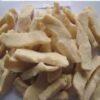
OEN CHEMICALS GMBH
Austria
Chloroprene rubber appears as a lumpy matter that varies in color from milky white to slightly yellowish. You can see it as white or grey chips commonly. The Chloroprene rubber does not have any mechanical impurities other than talcum powder. The primary characteristics of chloroprene rubber include a high crystallization rate along with strong cohesion and higher adhesion strength. Most important of all, chloroprene rubber has promising ozone resistance capabilities. Chemical application and strengths: The application of Chloroprene rubber is primarily evident as a raw material for the production of adhesives. It is suitable for the production of adhesive cement and is used alone or in some cases, with other types for preparation of adhesives with a higher tack. The use of chloroprene rubber is largely evident in the preparation of adhesives for the shoe industry as well as rubber, metal, wood, leather, and construction materials.
Request for a quote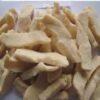
OEN CHEMICALS GMBH
Austria
Chemical appearance: Chloroprene rubber appears as a lumpy matter that varies in color from milky white to slightly yellowish. You can see it as white or grey chips commonly. The Chloroprene rubber does not have any mechanical impurities other than talcum powder. The primary characteristics of chloroprene rubber include a high crystallization rate along with strong cohesion and higher adhesion strength. Most important of all, chloroprene rubber has promising ozone resistance capabilities. Chemical application and strengths: The application of Chloroprene rubber is primarily evident as a raw material for the production of adhesives. It is suitable for the production of adhesive cement and is used alone or in some cases, with other types for preparation of adhesives with a higher tack. The use of chloroprene rubber is largely evident in the preparation of adhesives for the shoe industry as well as rubber, metal, wood, leather, and construction materials.
Request for a quote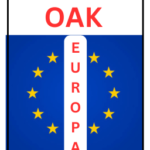
OEN CHEMICALS GMBH
Austria
2-Hydroxypropyl Methacrylate is an organic chemical. It is an ester of methacrylic acid. It is a very useful chemical substance that is produced on a large scale by the addition of propylene oxide to methacrylic acid with a catalyst base and its chemical formula is C7H12O3. It is a categorised as a functional hydrophobic hydroxy monomer. It is also known as an enoate ester. Chemical Appearance 2-Hydroxypropyl Methacrylate has the appearance of a clear and colourless liquid. Its vapours are heavier than air. It is a combustible substance and is slightly denser than water. Chemical Applications and Strengths 2-Hydroxypropyl Methacrylate or 2HPMA is an extremely useful chemical and thus, has many significant applications. Its main applications and strengths are: 2-Hydroxypropyl Methacrylate is most commonly consumed as a raw material in the production of solid and emulsion polymers. It forms a homopolymer and copolymers.
Request for a quote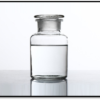
OEN CHEMICALS GMBH
Austria
2-Hydroxyethyl Acrylate is an organic compound. It is an ester of acrylic acid. It is a very useful chemical compound that is industrially produced by liquid phase esterification of acrylic acid with ethylene oxide. It is also produced by the reaction of acrylic acid with ethylene glycol. Its chemical formula is C5H8O3. Chemical Appearance 2-Hydroxyethyl Acrylate has the appearance of a clear and colourless liquid. It is slightly less dense than water. Its vapours are heavier than air. It is corrosive to tissue. It may polymerise exothermically if heated or contaminated. It has a mildly pungent ester like odour. Chemical Applications and Strengths 2-Hydroxyethyl Acrylate or 2HEA is an extremely useful chemical compound and therefore, has many industrial applications. Its main applications and strengths are: 2-Hydroxyethyl Acrylate is most commonly used for the production of solid polymers and polymer solutions. It forms homopolymers and copolymers.
Request for a quote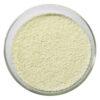
OEN CHEMICALS GMBH
Austria
Chemical appearance Zinc Sulfate Monohydrate has a vibrant white colour and comes in crystal powder form. It is subtly soluble in acid and water. It doesn’t produce any strong pungent odour. It is very toxic to aquatic wildlife and should not be disposed incorrectly. Chemical application and strength Zinc Sulfate Monohydrate is product which is being used in a wide range of daily applications and manufacturing purposes. In the Agricultural industry it is popularly used in fertilizers and pesticides. It can also be found being used in different binding agents and general adhesives. Used in the production of different cleaning and washing products which include laundry detergents, grease strippers, soaps, stain removers, and many more. Also used in the production of personal hygiene like perfumes, toothpastes, shampoos, lotions and others In the painting industry, Zinc Sulfate Monohydrate is used as modifiers in paints.
Request for a quote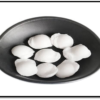
OEN CHEMICALS GMBH
Austria
Maleic Anhydride – MA is an organic compound. It is a very important chemical compound which is made by the vapour phase oxidation of n-butane. Its chemical formula is C4H2O3. Chemical Appearance Maleic Anhydride – MA has the appearance of a white crystalline or needle like solid. It has an irritating, choking odour. It is reactive in water. Chemical Applications and Strengths Maleic Anhydride – MA or Furan-2,5-dione is an extremely useful chemical compound and therefore, has many industrial applications. Its main applications and strengths are: Maleic Anhydride is most commonly used in the process of production of unsaturated polyester resins UPR.
Request for a quote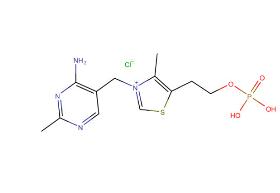
LTD NATURE SCIENCE TECHNOLOGIES
Latvia
Thiamine monophosphate is a natural compound and a phosphorylated version of thiamine – an essential vitamin B1. It can be obtained from various dietary sources like meat, whole grain, and legumes.
Request for a quote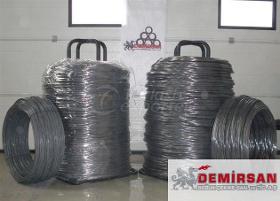
DEMIRSAN SOGUK CEKME SAN VE TIC A.S
Turkey
STANDARDS TS EN 10218 QUALITY & RAW MATERIAL STANDARDS TS 2348, DIN EN 10016 (SAE 1006-1008-1010, CQ15, ST37,QST 36,20MnB4) DIN EN 10216, DIN EN10217, DIN EN 17223, DIN EN 10025, DIN EN 10263-2, DIN EN 10263-3, DIN EN 10263-4… DIAMETERS Ø 0,70 mm - Ø 30,00 mm PACKAGING 50 kg to 150 kg coils, 1000 kg basket and 500 to 1000 kg Z2 - Z3, 1500 kg Z4 TENSILE STRENGTH 500 - 1000 N/mm2 SURFACE QUALITY clean surfaces painting applications for better coating of PVC and powder according to customer requirements AREAS OF USAGE White goods, automotive sector, screw, nuts, rivets, nails, dowel screws and fasteners
Request for a quote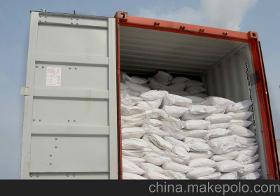
SUN CHEMICAL - COLORS & EFFECTS NETHERLANDS B.V
Netherlands
The compound is usually a white powder. It is odourless but irritating to the skin and eyes. The mix is slightly soluble in water and does not burn when exposed to naked flames. It may also take as light yellow colour and is soluble in dilute nitric acid and hydrochloric acid.
Request for a quoteResults for
Phosphates - Import exportNumber of results
76 ProductsCountries
Company type
Category
- Import-export - chemicals and pharmaceuticals (21)
- Wines (14)
- Plastics - machines and material for industry (6)
- Chemical catalysts (5)
- Batteries (4)
- Energy - renewable (2)
- Anti-corrosion products, chemical (2)
- Chemical fertilizers (2)
- Chemical metal treatment (2)
- Cleaning and maintenance products, household (2)
- Cosmetics (2)
- Machine tools - metal machining (2)
- Chemicals - import-export (1)
- Chemistry, organic - raw materials and derivatives (1)
- Concrete constructions (1)
- Custom design springs (1)
- Detergents and soaps - professional (1)
- Fabrics, coated (1)
- Hand tools, non-power (1)
- Milling - steels and metals (1)
